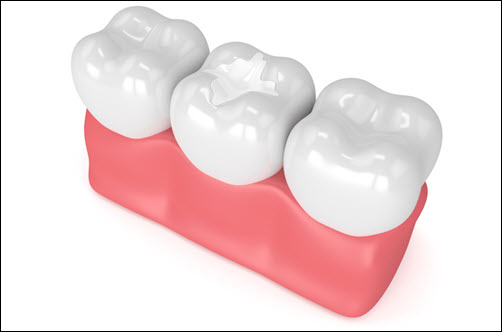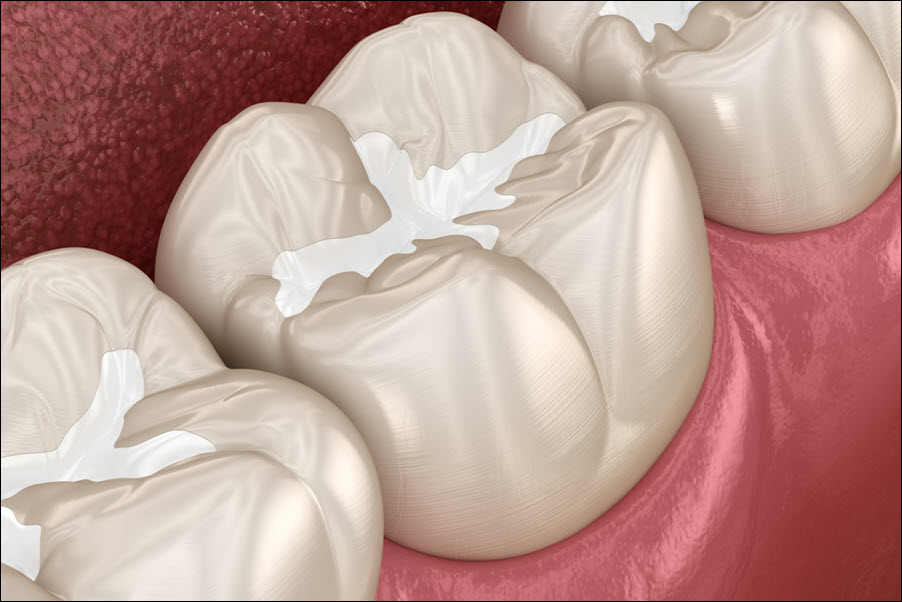Dental Sealants Are Important for Children’s Teeth
Dental Sealants protect children’s teeth from cavities and decay. They create a protective barrier over the chewing surfaces of molars. Molars have deep grooves that trap food and bacteria, increasing cavity risk. Sealants fill these grooves, making it harder for plaque to form. Dentists apply sealants quickly and painlessly during a regular visit. Sealants provide long-term protection, reducing the need for fillings and dental treatments. Early application improves enamel strength and cavity resistance. Sealants protect against acid and bacterial damage. Understanding why sealants are important strengthens your child’s dental health. Let’s explore how sealants protect children’s teeth and improve oral health.
How Dental Sealants Protect Teeth
Sealants create a smooth surface over deep grooves in molars. These grooves collect food and bacteria, increasing cavity risk. Brushing and flossing often miss these hard-to-reach areas. Sealants prevent plaque and food particles from settling in the grooves. The smooth surface makes cleaning easier and more effective. Dental sealants provide a physical barrier against acid and bacterial damage. Professional application improves bite comfort and tooth strength. Sealants harden quickly and bond to tooth enamel. Dentists recommend sealants for children as soon as their molars emerge. Stronger enamel increases chewing efficiency and reduces tooth sensitivity. Protected molars reduce future dental costs and improve oral health.
Why Children Need Sealants Early
 Children’s molars have deep grooves that trap food and bacteria. Developing enamel is more vulnerable to acid and plaque. Sealants protect new molars as soon as they emerge. Early application increases enamel strength and cavity resistance. Children often struggle to clean back teeth properly. Dental sealants reduce plaque buildup and improve cleaning effectiveness. Professional sealant application protects against acid and bacterial damage. Early sealant use reduces the need for fillings and dental treatments. Stronger molars improve chewing strength and reduce sensitivity. Protected teeth increase long-term dental health and comfort. Early sealant use prevents long-term dental issues and tooth decay.
Children’s molars have deep grooves that trap food and bacteria. Developing enamel is more vulnerable to acid and plaque. Sealants protect new molars as soon as they emerge. Early application increases enamel strength and cavity resistance. Children often struggle to clean back teeth properly. Dental sealants reduce plaque buildup and improve cleaning effectiveness. Professional sealant application protects against acid and bacterial damage. Early sealant use reduces the need for fillings and dental treatments. Stronger molars improve chewing strength and reduce sensitivity. Protected teeth increase long-term dental health and comfort. Early sealant use prevents long-term dental issues and tooth decay.
The Sealant Application Process
Applying sealants is quick and painless. Dentists clean and dry the teeth before applying the sealant. A special gel prepares the tooth surface for bonding. The dentist applies the sealant to the chewing surfaces of molars. A curing light hardens the sealant in 30 to 60 seconds. The hardened sealant creates a smooth, protective barrier. The process takes about 10 to 15 minutes per tooth. Children experience no discomfort during the procedure. Sealants are clear or tooth-colored, blending with natural teeth. Professional monitoring ensures proper sealant adhesion and coverage. Regular checkups maintain sealant strength and protection. Properly applied sealants increase tooth strength and cavity resistance.
Long-Term Benefits of Sealants
Dental sealants provide long-term cavity protection for molars. Properly applied sealants last between 5 to 10 years. Dentists check sealants during regular cleanings and reapply when needed. Protected molars resist plaque buildup and acid erosion. Sealants reduce cavity risk by up to 80%. Stronger molars increase chewing efficiency and reduce sensitivity. Sealants improve bite balance and tooth alignment. Reduced plaque buildup improves gum health and breath freshness. Protected molars reduce the need for future dental treatments. Early sealant use improves overall dental strength and health. Stronger teeth increase long-term comfort and smile confidence. Sealants improve both dental strength and overall health.
Protecting Permanent Teeth with Dental Sealants
Sealants protect both baby and permanent molars. Baby teeth guide permanent teeth into place and support jaw development. Early loss of baby teeth increases misalignment and bite issues. Sealants protect baby molars from decay and early loss. Protecting baby teeth ensures proper spacing for permanent teeth. Dentists recommend sealants for permanent molars as soon as they emerge. Stronger permanent molars reduce future cavity risk and sensitivity. Sealants prevent early enamel wear and improve chewing comfort. Professional care increases sealant strength and durability. Protected molars increase overall bite strength and dental health. Dental sealants improve long-term tooth strength and alignment.
Sealants vs. Fillings
Sealants prevent cavities before they form. Fillings treat damage after cavities develop. Sealants protect tooth enamel from acid and bacterial damage. Applying sealants is faster, easier, and less invasive than fillings. Fillings require drilling and removal of damaged enamel. Sealants bond to healthy enamel without drilling. Preventing cavities with sealants reduces future dental treatments. Sealants improve enamel strength and increase plaque resistance. Professional sealant care reduces cavity formation and enamel loss. Proper sealant application improves long-term dental strength and comfort. Stronger enamel increases chewing efficiency and bite balance. Sealants reduce the need for future fillings and dental work.
Maintaining Sealant Strength
Proper care increases sealant lifespan and effectiveness. Brushing twice daily with fluoride toothpaste strengthens enamel. Flossing daily reduces plaque buildup and protects gum health. Avoid chewing hard objects, which can weaken sealants. Regular dental checkups ensure proper sealant adhesion and strength. Professional cleanings remove plaque and tartar from tooth surfaces. Dentists recommend reapplying sealants every 5 to 10 years. Professional monitoring increases sealant strength and effectiveness. Better oral hygiene increases enamel durability and cavity resistance. Proper care increases sealant strength and overall dental health. Stronger teeth increase comfort and chewing strength. Maintaining sealants increases long-term dental protection and health.
Boosting Confidence with Protected Teeth
Sealants increase smile strength and comfort. Protected molars increase chewing efficiency and bite stability. Reduced plaque buildup increases breath freshness and gum health. Stronger enamel improves resistance to acid and bacterial damage. Protected teeth increase confidence when eating and speaking. Reduced sensitivity increases comfort with hot, cold, and sweet foods. Balanced bite strength increases overall mouth comfort. Clean, smooth teeth improve smile appearance and strength. Proper sealant care increases long-term dental health and confidence. Stronger teeth improve both personal and social comfort. Protected teeth improve overall dental strength and comfort. A confident smile increases both dental health and personal comfort.
Sealants protect children’s teeth from cavities and enamel damage. Early application increases enamel strength and plaque resistance. Professional care improves dental sealant adhesion and durability. Sealants reduce the need for future fillings and dental treatments. Protected molars increase chewing strength and bite comfort. Proper care increases sealant strength and overall dental health. Long-term sealant use reduces cavity risk and increases tooth durability. Investing in sealants strengthens teeth and improves smile confidence. Stronger enamel increases overall dental comfort and health. Sealants improve both long-term dental strength and personal comfort. Protected teeth increase both smile strength and overall confidence.

